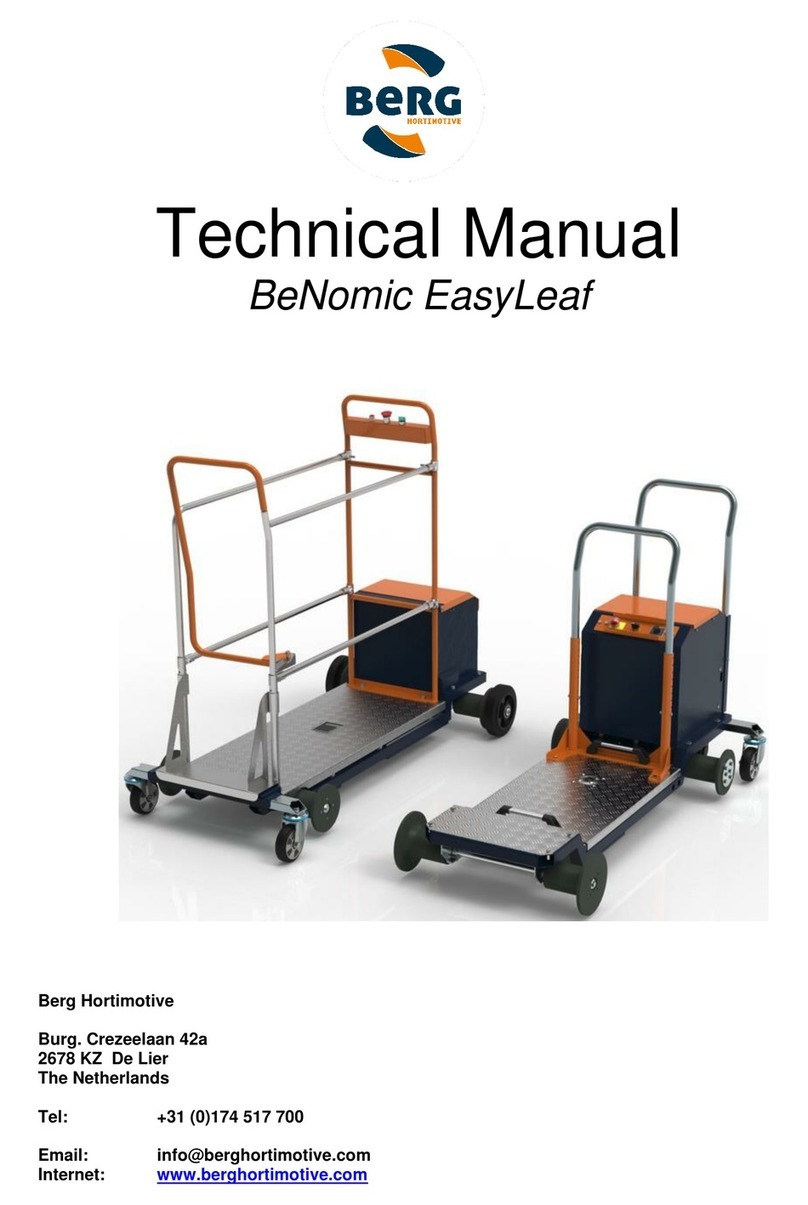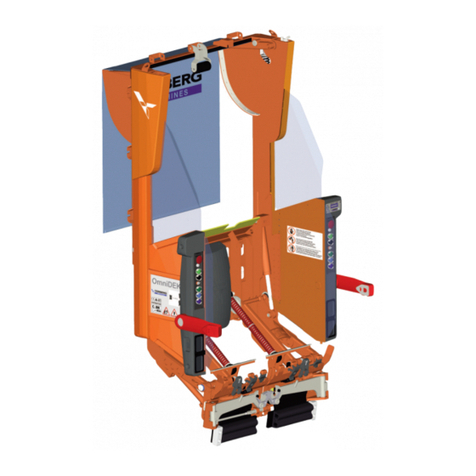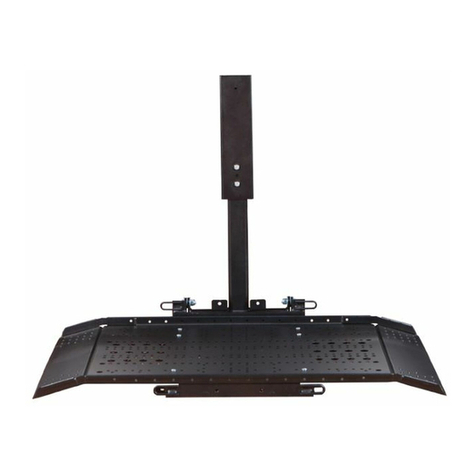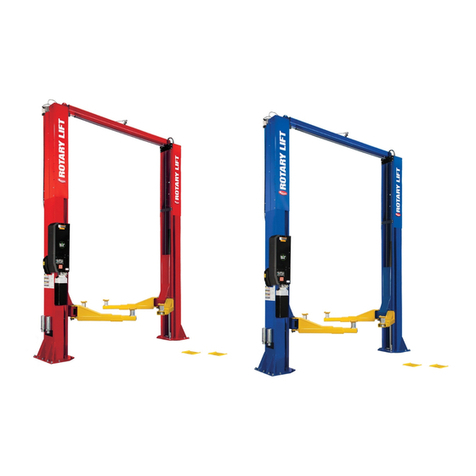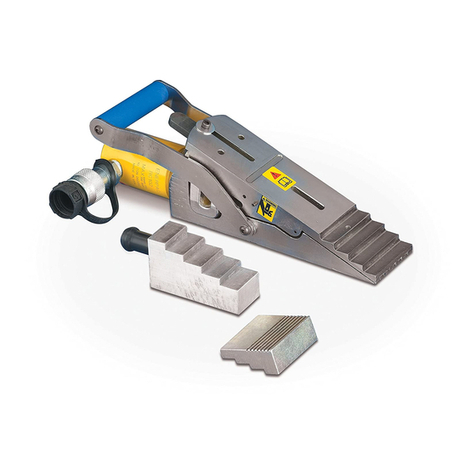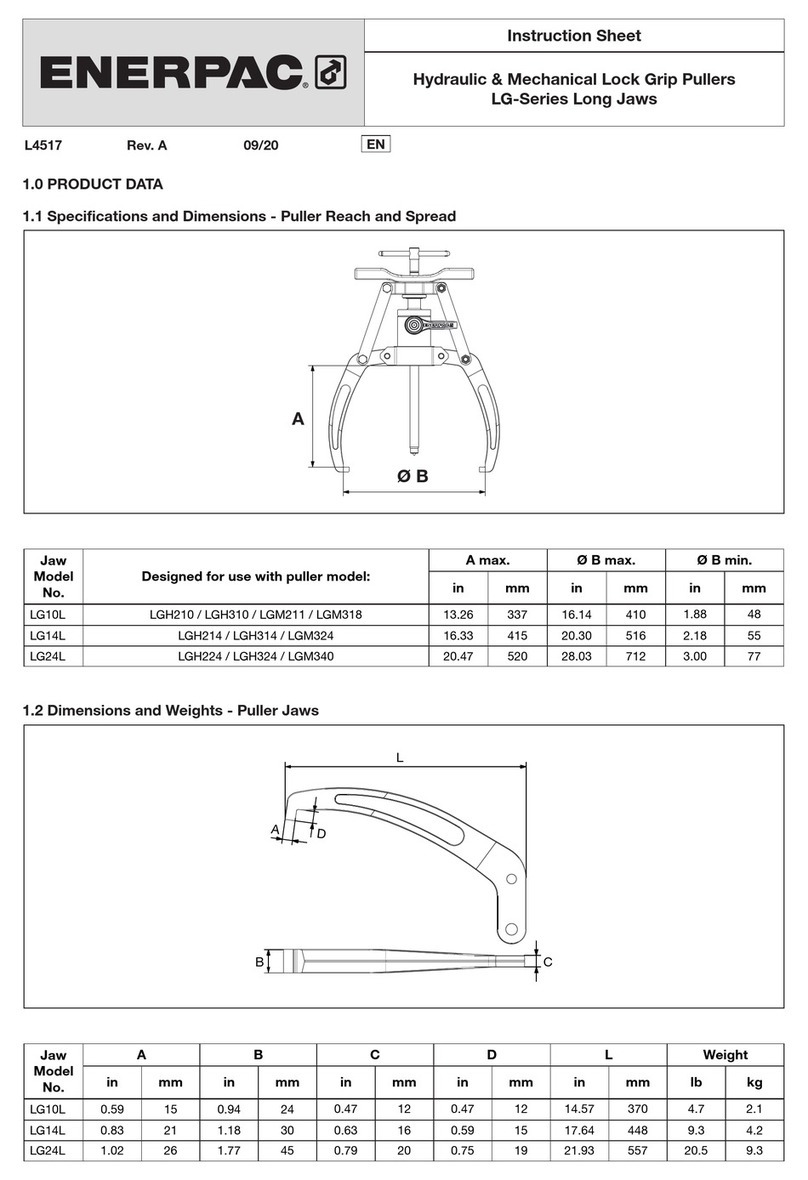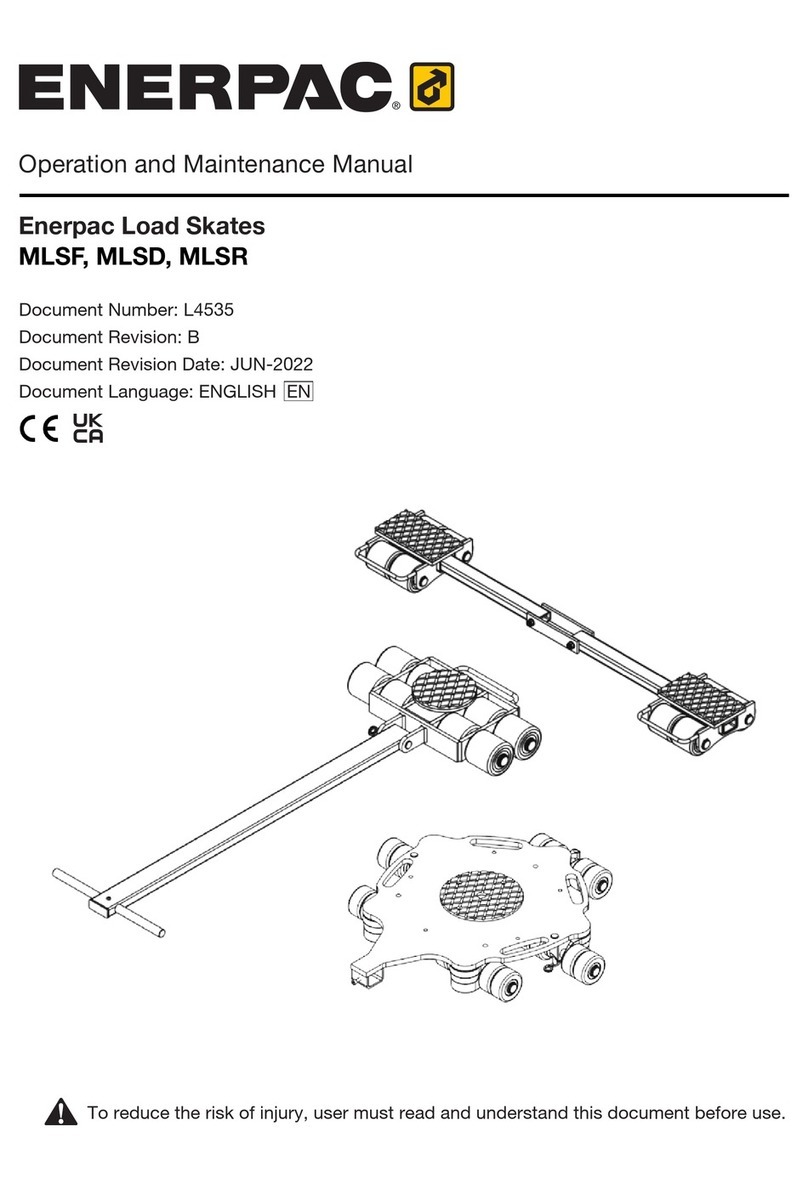
8
6.3 Pendant Controls
The air motor will start automatically when either pendant button
is depressed. See Figure 9.
• To extend (raise) the cylinder
-
press and hold the pendant UP button.
• To retract (lower) the cylinder -
press and hold the pendant DOWN button.
• To stop
the
cylinder and hold the load -
release both pendant buttons.
When depressing or releasing either pendant button,
there may be a brief delay until the desired action occurs. A small
amount of time (up to one second) is required for the jack's
pneumatic control circuit to respond to pendant commands.
DOWN
BUTTON
UP
BUTTON
Figure 9, Pendant Controls
6.4 Checking Jack Operation Before Use
Before using the jack for the first time, or if the jack has been
in storage for more than 30 days, check the jack operation as
described in the following steps:
1. If not already done, check the oil level in the hydraulic
reservoir. Refer to Section 7.3 for additional information.
2. Verify that the jack is connected to the compressed
air supply, and that the air pressure setting is correct.
Refer to section 5.3 for air pressure requirements and
recommendations.
3. Be sure that the jack air shut-ovalve is in the OPEN position.
Perform the following step with no load on jack. Refer
to Section 6.3 for pendant control information.
4. Fully extend and retract the cylinder to verify proper
operation. If needed, continue cycling the cylinder until
operation is smooth, and any trapped air has been removed
from the system.
The jack will make a “hissing”sound when the air
supply is connected and the air-shutovalve is in the OPEN
position. This sound is normal, and indicates that the jack
pneumatic system is pressurized.
6.5 Operating Instructions
WARNING
Failure to observe and comply with the following precautions
could result in death or serious personal injury. Load may
become unstable or drop. Property damage could also occur.
• Before operating the jack, refer to the Pow’R Lock Use
Guidelines Supplement (Enerpac document L4131) for
important lifting information and precautions.
• Always lift, support and lower the load in accordance with
all applicable work rules and regulations in eect at your
worksite or facility.
• Wait an appropriate amount of time before working under
the load. Any settling of jack base or load supports (if used)
into the ground below must not exceed 1/4 inch [6,4 mm].
If additional settling occurs, lower the load and reposition
jack on solid ground.
6.5.1 BEFORE BEGINNING THE LIFT:
1. Using the handle assembly, adjust the jack position so that
the cylinder load cap is centered under the jacking point of
the load. Be sure that the jack base is positioned on a solid
and level support surface, with the cylinder perpendicular to
the floor or ground.
WARNING Close positioning of the jack under the load
with the detent pins disengaged should only be done when
the upper handle is positioned in the lowest, most horizontal
locking position. Uncontrolled tipping of the jack may occur
if this precaution is not observed and serious personal injury
could result. Refer to additional instructions and precautions
in sections 5.6.1, 5.6.2 and 5.6.3 of this document.
2. After positioning the jack, be sure that both detent pins on
the lower jack handle are fully pulled out (disengaged).
Be certain that both detent pins are disengaged before
using jack to lift, support or lower a load. Failure to observe this
precaution may result in damage to the lower handle, wheels, or
axles.
3. If a high jacking point requires a taller jack, install extensions
and/or spacers (optional accessories) on the cylinder as
required. Refer to Section 6.6 for installation instructions and
additional information about extensions and spacers.
4. Place a piece of good quality plywood or other compression
material (approximately 1/4 inch [6,4 mm] thick with high
friction characteristics) between the cylinder load cap
and the jacking point. This will provide a small amount of
cushioning and will also help prevent damage to the jacking
point.
WARNING Jacking at an angle can allow the jack to slip
out of position, resulting in possible loss of load, personal
injury and/or damage to jack. As required, use a swivel load
cap to properly engage an angled lifting point. The slope of
the angled lifting point must not exceed 5 degrees.
6.5.2 TO RAISE THE LOAD:
1. Depress and hold the pendant UP button. The air motor will
start and the cylinder will begin extending.
2. When the load has reached the desired height, release the
pendant UP button. The cylinder will stop and the load will
remain supported.
Although the Pow’R-LOCK™ jack is designed to be a
load holding device, the use of auxiliary stands, blocking or other
additional load supports may be required in your location. Follow
all applicable work rules and regulations in eect at your facility
or worksite.












